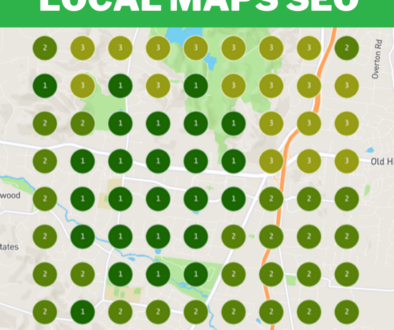Back to the SEO Basics
As the world’s largest search engine, Google constantly updates and improves its algorithms to provide users with the most relevant and high-quality search results possible. For website owners and marketers, this means staying up-to-date with the latest SEO best practices and following Google’s guidelines to ensure their website ranks higher in search results.
Recently, Google has provided some new advice on how to rank higher with SEO. In this article, we’ll explore this advice and offer some implementation tips.
Focus on User Experience (UX)
Google has always stressed the importance of providing a great user experience, but it’s now more critical than ever. User experience encompasses everything from the speed of your website to the quality of your content to the ease of navigation.
One of the key factors that Google looks at when ranking websites is the bounce rate. If users click on your website but quickly leave because they don’t find what they’re looking for, Google will view your website as less relevant and lower its ranking.
To improve user experience and lower bounce rates, make sure your website is easy to navigate and has a clear, simple layout. Use headings and subheadings to organize your content, and break up large blocks of text with images and videos.
In addition, make sure your website loads quickly. Use tools like Google PageSpeed Insights to analyze your website’s speed and identify areas for improvement.
Create High-Quality Content
One of the most important factors in ranking higher with SEO is creating high-quality, relevant content that meets the needs of your target audience. Google’s algorithms are designed to reward websites that provide helpful, valuable content.
To create high-quality content, identify your target audience and their needs. What questions are they asking? What problems are they trying to solve? Then, use this information to create content that addresses these needs and provides valuable insights.
Ensure your content is well-written, easy to read, and error-free. Use keywords strategically, but do just what is necessary. Google’s algorithms are designed to detect keyword stuffing, and this can hurt your ranking.
Optimize for Mobile Devices
With the rise of mobile devices, Google has made it clear that websites that are not mobile-friendly will not rank as high as those that are. This means that if your website is not optimized for mobile devices, you could miss out on significant potential traffic.
To optimize your website for mobile devices, use a responsive design that adjusts to the screen size. This will ensure your website looks great and functions well on all devices, from desktop computers to smartphones.
In addition, make sure your website’s content is easy to read on a small screen. Use large, clear fonts, and avoid using small text or images that are hard to see.
Use Structured Data
Structured data is a way of organizing your website’s content so that search engines can better understand what it’s about. The data can help improve your website’s visibility in search results and help Google display more relevant information in search snippets.
To use structured data, you must add schema markup to your website’s HTML code. Structured Data can be technical, but many resources are available to help you get started – including local marketing companies like Zellus!
Structured data can be used to provide information about your business, such as your address and phone number, as well as information about your products, such as pricing and availability. It can also be used to provide additional information about your content, such as reviews or ratings.
Build High-Quality Backlinks
Backlinks are links from other websites that point to your website. Google views backlinks as a sign of authority and relevance, and websites with high-quality backlinks tend to rank higher in search results.
To build high-quality backlinks, focus on creating great content that is shareable and valuable to your target audience. Then, when other websites link to your content, it’s a sign that they find it valuable and relevant.
You can also contact other websites in your industry and ask if they would be willing to link to your content. Just make sure you’re only asking for links from websites that are relevant and authoritative.
It’s important to note that not all backlinks are created equal. Google values backlinks from authoritative websites more than those from low-quality or spammy websites. So, focus on building high-quality backlinks from reputable websites.
Use Social Media to Promote Your Content
Social media can be a powerful tool for promoting content and building backlinks. Sharing your content on social media can attract the attention of other website owners and bloggers who may link to it from their own websites.
In addition, social media can help you build relationships with your target audience and encourage them to share your content with their networks. This can help increase the visibility of your content and improve your website’s ranking in search results.
When promoting your social media content, ensure you’re using the right platforms for your target audience. For example, LinkedIn may be a better platform than Facebook or Instagram if your target audience is primarily professionals.
Monitor Your Website’s Analytics
Finally, it’s essential to regularly monitor your website’s analytics to see how your SEO efforts are paying off. Google Analytics is a powerful tool that can provide insights into how users interact with your website, which pages are most popular, and where your traffic is originating.
By analyzing your website’s analytics, you can identify areas to improve and adjust your SEO strategy accordingly. For example, if you notice that users are leaving your website after visiting a particular page, you may need to improve the quality of that page’s content or optimize its layout.
So what’s next?
In conclusion, Google’s most recent advice on ranking higher with SEO emphasizes the importance of user experience, high-quality content, mobile optimization, structured data, high-quality backlinks, social media promotion, and website analytics. By following these best practices and staying up-to-date with Google’s guidelines, you can improve your website’s visibility in search results and attract more traffic.



